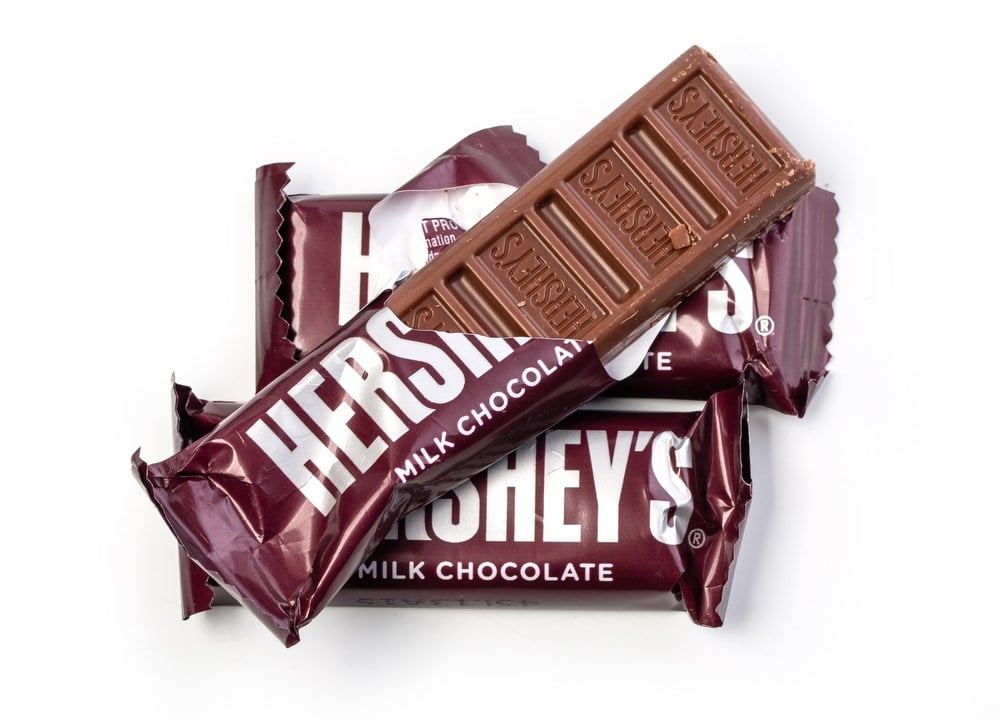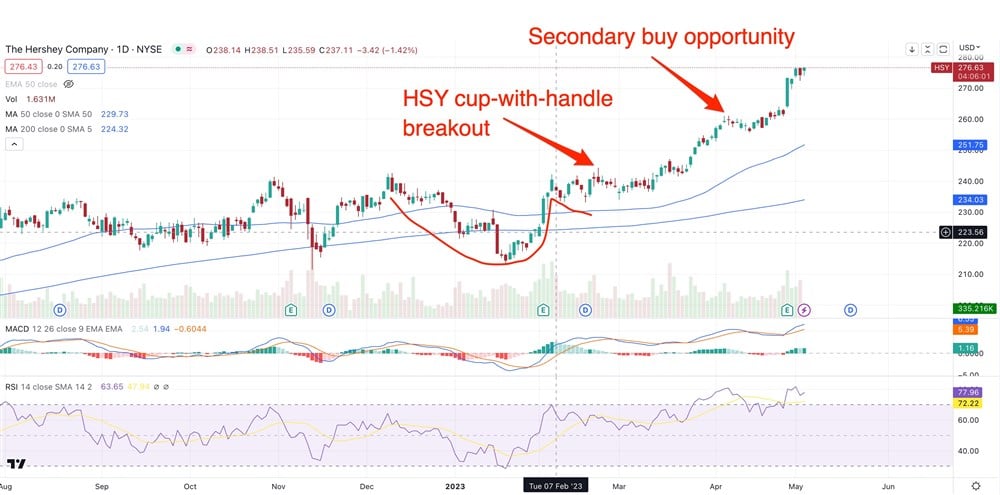

In turbulent and uncertain markets, investors turn to reliable dividend payers and well-known names. Consumer spending on snacks and sweets haven't sacrificed due to recession fears, including in strong recent price gains in stocks like PepsiCo Inc. (NYSE: PEP), Mondelez International Inc. (NASDAQ: MDLZ) and The Hershey Co. (NYSE: HSY).
While you might intuitively think there’s some risk that consumers will pull back on discretionary snacking purchases, these stocks have more of a defensive flavor. If you’re driving around doing errands and need a pick-me-up, it’s easy to grab a quick snack. You might grumble a little about price increases, but that’s not likely to stop you from making the purchase.
Beating Wall Street Views
In its most recent quarter from April 27, Hershey’s reported earnings of $2.96 a share on revenue of $2.987 billion, year-over-year increases of 17% and 12%, respectively. Hershey earnings data show the company exceeding views on the top and bottom lines.
Hershey stock price beat both earnings and sales views in every quarter since September 2020. Wall Street expects the company to earn $9.53 a share this year, a 12% increase. Earnings are seen rising another 8% in 2024.
The stock broke out of a cup-with-handle pattern with an entry point north of 242.26. It pulled back and traded essentially sideways for the next two weeks, finding support well above its 50-day average, before beginning a strong rally. The stock posted the following returns:
- One week: 4.30%
- One month: 7.82%
- Three months: 17.45%
- Year-to-date: 18.90%
The Hershey chart gives you a good view of the strong uptrend that began in late February.
The stock presented a secondary buy point above $261.17, after it pulled back for two weeks, holding near its 10-day moving average as investors bided their time ahead of the earnings report.
Outperforming Consumer Staples Sector
Hershey’s returns easily top the S&P 500, of which Hershey is a component. They also outpace the consumer staples sector, which also includes PepsiCo and Mondelez, among other stocks that performed well recently. In the past month, consumer staples, as tracked by the Consumer Staples Select Sector SPDR Fund (NYSEARCA: XLP), has been the S&P’s top-performing sector.
Hershey is part of the confectioners’ sub-industry, but its brand portfolio goes way beyond familiar products such as Reese’s, Kisses, Milk Duds and classic Hershey bars, which are continually revamped with new flavor combinations and packaging. More upscale Hershey’s chocolate brands include Bark Thins and Lily’s. In that sense, Hershey’s shares traits in common with Mondelez, which also owns chocolate brands.
However, Hershey’s also owns salty snack brands including Skinny Pop, Dot’s Pretzels, Pirate’s Booty and Pahqui flavored tortilla chips. In that arena, PepsiCo is a rival, as it owns Frito Lay, Doritos, Cheetos, Rold Gold pretzels, and more.
Hershey’s North American salty snacks division was the fastest grower in the first quarter, with sales increasing 19.4% year-over-year. International grew by 19% and North American confectionary sales grew 10.6%.
Boosted 2023 Outlook
Hershey stock gapped up 3.93% in more than double average volume following the report. Among the pieces of sweet news was an increase in the full-year outlook. Hershey now expects net sales growth and earnings-per-share at the high end of its previously forecast range. It guided toward net sales growth of around 8%, reported earnings per share growth of approximately 15% and adjusted earnings per share growth of about 11%.
The Hershey dividend yield of 1.50% is an additional sweetener, and the company has a 13-year track record of raising the shareholder payout. That puts it in the ranks of Dividend Achievers.
The stock is currently out of buy range, as it’s now zoomed 6% from its secondary buy point above $261.17. However, another pullback is sure to come, as investors pocket some profits after the recent gains. The next pullback may offer a chance to buy shares. That’s generally a better strategy than chasing a stock higher than having buyer’s remorse when even a mild pullback puts you in the red.
